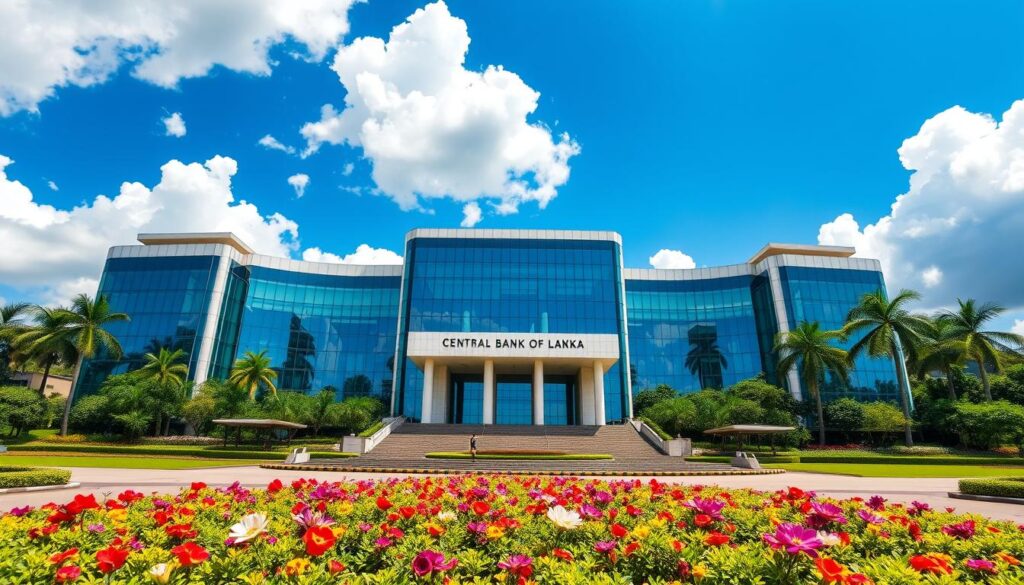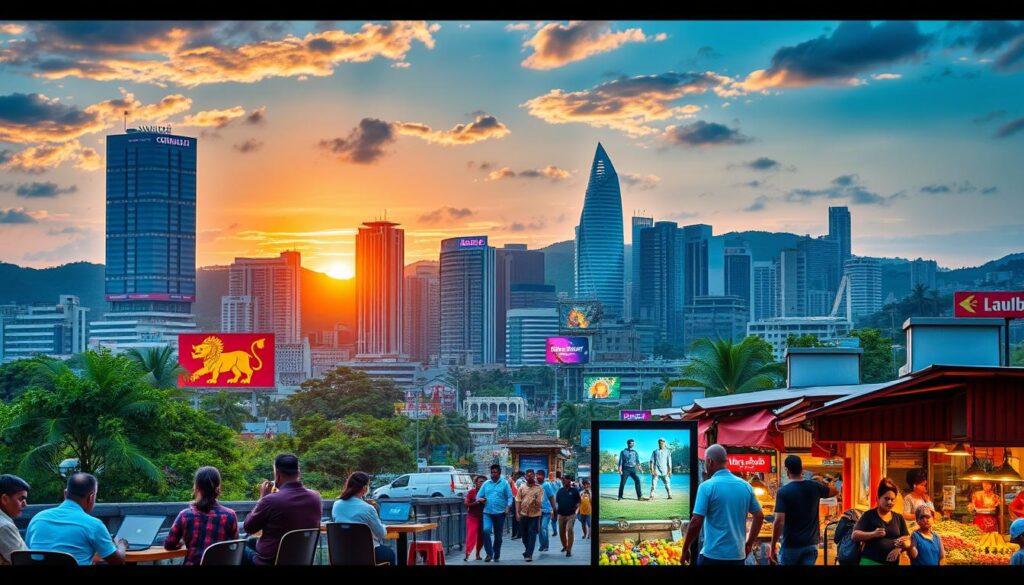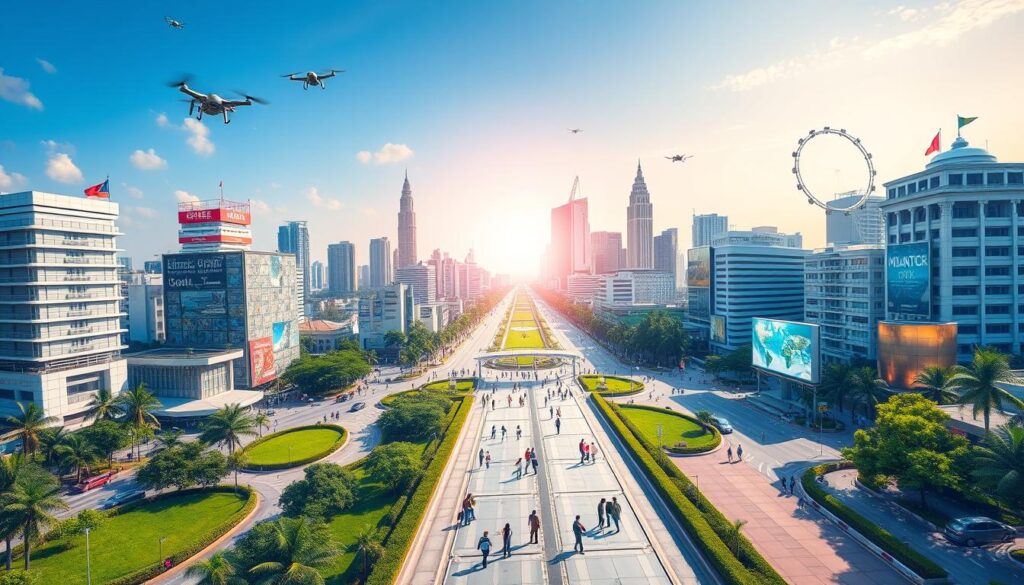Central Bank Raises Interest Rates Against Inflation
In a bold move to protect Economic Stability, the Central Bank of Sri Lanka has raised Interest Rates. This aims to tackle the high inflation. Historically, taking such firm actions helps stabilize finances. This mirrors strategies used globally during times of high inflation.

The Central Bank increased rates by 4.5 percentage points by July 2022. This was in response to a high inflation rate of 10.6% in October. It also raised the Standing Deposit Facility Rate (SDFR) and the Standing Lending Facility Rate. This helps control excess money and inflation in the economy.
Inflation dropped to 5.2% by September 2023. This positive trend offers hope for reaching a 2% inflation target. A recent interest rate cut by 0.25 percentage points makes loans more accessible. It supports both individuals and businesses financially.
OMP Sri Lanka tracks critical central banking actions. This includes reports on reduced private sector credit and tighter credit to state-owned businesses. The Bank’s actions show a commitment to monitoring inflation. They aim for economic recovery, aligning with the International Monetary Fund’s guidelines, as seen on their website.
Understanding the Central Bank’s Role in Economic Stability
The Central Bank’s Role is crucial in making sure the economy stays stable. It uses Monetary Policy to keep inflation in check. This helps maintain Price Stability and supports Sustainable Growth. The main aim is to smooth out economic ups and downs. This creates a good setting for investment and building wealth.

Using Monetary Policy is key in this effort. Central banks adjust interest rates and control the supply of money. This helps manage inflation and economic activities. By doing this, they keep prices steady, avoiding the trouble caused by inflation or deflation.
The Mandate of the Central Bank in Managing Monetary Policy
The central bank has a big job of keeping the country’s money stable. This is true in many places, like in Sri Lanka. It changes policy rates to influence the economy. The goal is to balance growth and inflation well, avoiding extremes.
Historical Instances of the Central Bank Controlling Inflation
Central banks have stopped hyperinflation before. For example, Germany in the 1920s and Zimbabwe in the 2000s. They used Monetary Policy to lower inflation to safer levels. This shows how central banks play a big role in Economic Stability.
Price Stability and Its Importance for Sustainable Growth
Stable prices are the foundation of Sustainable Growth. They let businesses plan and people make smart choices. Knowing what to expect with inflation helps. It makes investing appealing and helps with economic planning.
Looking at recent times in Sri Lanka, inflation dropped from 70% to a stable rate. This was thanks to careful monetary policy. It’s a great example of how central banks help keep the economy stable.
In summary, the central bank’s role in shaping policies for stability and growth cannot be underestimated. Their influence stretches across the economic scene. Knowing and supporting their strategies is vital for a successful economy.
Implications of Rising Interest Rates on the Economy
Various central banks around the world have raised interest rates. They aim to fight the high inflation that adds pressure on economies and budgets. These changes deeply affect economic growth. They change how businesses and customers behave with borrowing, spending, and investment.
Effects on Borrowing, Spending, and Investment Decisions
It’s important to see how rising interest rates change the economy. For instance, when rates go up, borrowing costs do too. This fact makes people and businesses think twice before getting loans for big buys or expansions. As a result, there’s less spending by buyers and fewer investments by companies, which slows down economic growth.
The Relationship Between Interest Rate Hikes and Asset Prices
When interest rates go up, the value of assets like houses and stocks often drops. This happens because safer investments, like government bonds, look better in comparison. They offer higher returns without as much risk. So, investors move their money, and this can make the market less liquid and more volatile.
Financial News: Navigating the Economic Impact of Monetary Tightening
The monetary tightening efforts of central banks are meant to lower inflation and stabilize the economy. But, it takes time to see the results of these policies. This means investors need to be careful and watch for any policy changes or market reactions. Central banks play a crucial role in this effort. They focus on the big financial goals of countries looking to recover economically and advance educationally, as shown in this example.
From Monetary Theory to Practical Measures
The world of global economics changes all the time, with Central Bank Policy at its heart. These banks use advanced Monetary Theory to shape the economy. They aim to manage issues like inflation, especially after the pandemic.
Before the pandemic, interest rates were very low, even negative in some cases. Central Bank balance sheets grew hugely to boost economies. This was a response to the big economic downturn known as the Great Financial Crisis (GFC). Buying lots of assets was a new key strategy.
After the pandemic, central banks started to tighten their policies quickly. They raised policy rates and reduced money supply, facing severe inflation. For many places, inflation rates went into the double digits. This prompted these strong actions from the central banks.
Even though big economies faced tough times, Emerging Market Economies (EMEs) avoided major crises. Still, they had to deal with unpredictable money flows and currency values. This was because of the immense monetary easing in major economies after the GFC.
In Sri Lanka, these global trends have their own effects, creating unique challenges. The country’s education system suffered, with a big shortage of paper leading to canceled student. This shows how wide-ranging the impact of poor inflation control can be.
In 2011, East African countries experienced similar economic issues. They saw high inflation rates that often matched global commodity price changes. This shows how important it is for central banks to manage inflation carefully. It’s vital for economic growth and stability in places like Sri Lanka.




